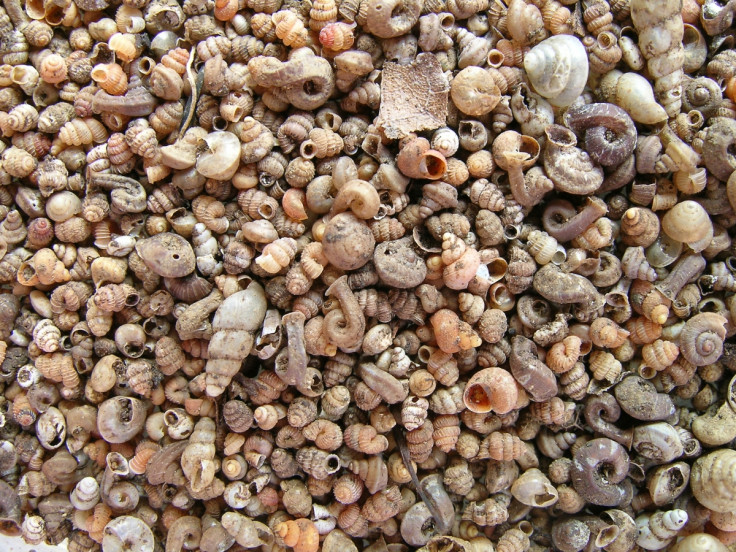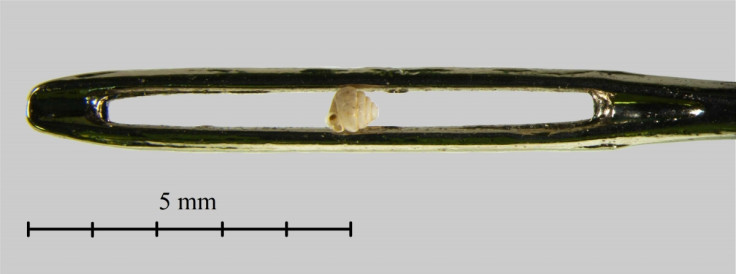Acmella nana: World's tiniest land snails discovered in Borneo measuring just 0.7mm in diameter
The world's tiniest land snail has been discovered in Borneo, measuring just 0.7mm in diameter on average, breaking the previous record-holder uncovered in China earlier in 2015. Acmella nana – or "dwarf" snail, was described in the journal ZooKeys.
The shell of Acmella nana measures just 0.50mm to 0.60mm in width and 0.60 to 0.79 mm in height. In comparison, the Chinese species Angustopiladominikae, described in ZooKeys in September, measured 0.86mm in height.

Acmella nana was one of 48 new snail species discovered in Borneo. While many were already known by snail researchers, they had never been named. Several of the species are only found on Mount Kinabalu, the team notes, while another - Diplommatina tylocheilos – is only found at the entrance to the almost inaccessible Loloposon Cave in Mount Trusmadi.
"A blazing forest fire at Loloposon Cave could wipe out the entire population of Diplommatina tylocheilos," study co-author Menno Schilthuizen said.

The authors say the new species can help researchers better understand isolated species. Because they spend a long time in one place, they can evolve and adapt to that habitat, undisturbed from the rest of the world. For this reason, they are good examples of how endemic species can develop.
Discussing the previous smallest land snail, the team wrote at the time: "Extremes in body size of organisms not only attract attention from the public, but also incite interest regarding their adaptation to their environment. Investigating tiny-shelled land snails is important for assessing biodiversity and natural history as well as for establishing the foundation for studying the evolution of dwarfism in invertebrate animals."
© Copyright IBTimes 2025. All rights reserved.






















